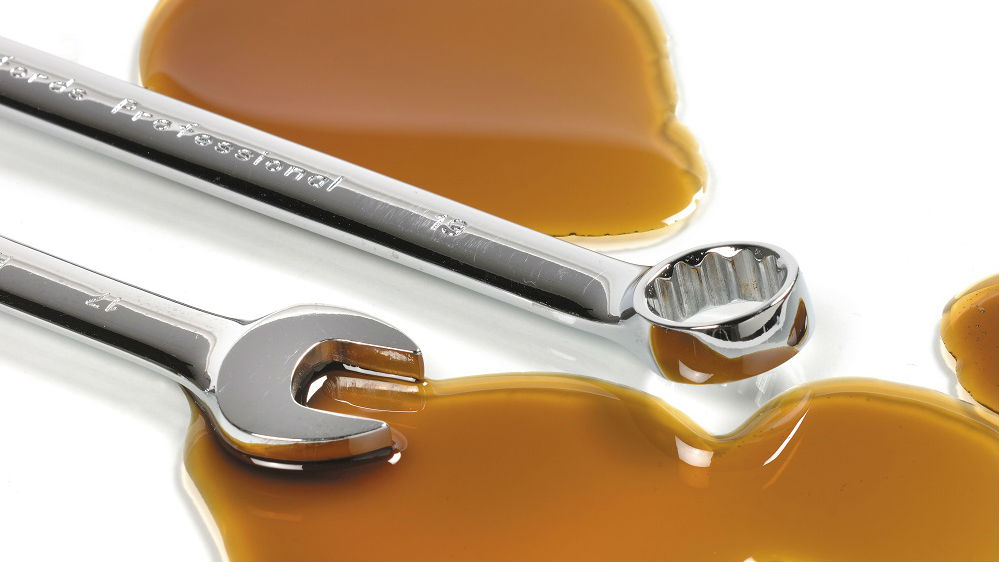Embracing and Managing Change

By Larry Rumbol
Changes in engineering are transforming ships from purely mechanical machines into hubs of complex electronics. From an engineering perspective, this means that in many respects ships are undergoing a major redesign, and the rate of change is not likely to slow down anytime soon. If anything, it will probably speed up even more over the years ahead.
While these innovations can bring substantial benefits to shipowners and their end customers, the rising complexity presents certain challenges. Both in terms of engineering – the crew must master more technology than ever before – and to ensure that maximum return on investment is achieved on costly infrastructure investment.
It’s for this reason that many successful companies are embracing condition-based maintenance (CBM) to monitor the actual condition of an asset to decide what maintenance needs to be done. This contrasts with traditional planned (or scheduled) maintenance, where maintenance is performed based upon predefined scheduled intervals. By taking a proactive approach to monitoring the health of vital equipment and machinery, operators can achieve better control of the risks whilst also maximizing an asset’s return on investment.
In terms of cost, time and additional inconvenience, unexpected maintenance caused by a breakdown is rarely inexpensive. For this reason, Parker Kittiwake has become increasingly concerned about the proposed draft changes to the ISO 8217 marine fuel quality standard. It’s a fear that has been echoed by Veritas Petroleum Services (VPS) and INTERTANKO, who similarly believe that the proposed could be seen as an obstacle to the development of fuels capable of safely and effectively meeting future requirements. Especially because as Gerard Rohaan, CEO at VPS, recently said, “ISO 8217 was introduced to govern fuel quality with an implied need to ensure the seaworthiness of the ship.”
There are noteworthy fears regarding the potential for a higher tolerance levels for the concentration of harmful and abrasive particles and the effects this will have on critical machinery. For example, the proposed changes to paragraphs five and six have the potential to significantly impact bunker quality and increase the likelihood of impaired propulsion resulting from contaminants such as catalytic (cat) fines in the fuel.
Should they take effect, the draft amends to Clause 8 of ISO 8217:2016 would mean that a bunker could not be vetoed for exceeding the specification limit value unless it exceeded a 95 percent confidence limit. According to VPS’ calculations, this would result in the permissible concentration of cat fines rising from 60ppm to 72ppm. A development like this would be in direct conflict with the guidance given by numerous original equipment manufacturers, such Wärtsilä and MAN, who recommend that fuel with a cat fines concentration of no more than 15 ppm fuel their engines.
The ingress of cat fines has the potential to cause costly and extensive damage to critical components including fuel pumps, injectors, piston rings and liners. For example, the replacement of a single cylinder liner can be up to $65,000 for parts alone, and this cost can escalate to more than $1 million once the associated costs of labor and unplanned downtime are considered, as well as the likely event that multiple cylinders will be affected.
Historically, seafarers have relied upon planned maintenance, backed up by what they can physically hear and see during equipment inspections. However the chance of an engineer failing to uncover and address potential catastrophes is directly proportionate to a vessel’s design complexity. This is compounded by a skills gap that can prove very costly. In 2016, a joint study by UK P&I Club and Solis Marine Consultant found that human error continues to be a major contributing factor in shipping claims, and learning to manage this issue is the key to delivering best in class service and surpassing customer expectations.
At the beginning of this year DNV-GL introduced a new notation allowing extended inspection periods for propeller shafts using seawater-lubricated bearings. This comes after broadly similar revisions by Lloyd’s Register, Bureau Veritas and the China Classification Society. This development is part of a trend that many in the industry consider long overdue: mandatory periodic maintenance or inspection is an out-dated requirement as long as certain condition monitoring criteria are met.
This change has been prompted, in large part, by the conclusions of operators who are realizing that since many manufacturers’ maintenance suggestions aren’t always based upon real experience data – indeed most are extrapolations from laboratory testing - that they can save valuable time and money, and improve a vessels’ performance by implementing condition monitoring practices.
Today many companies, such as the leading ship manager Norbulk, are investing in proactive measures to monitor parts and operations in order to reduce expenses and downtime. In 2015 for example, after a competitive evaluation of the market options, Norbulk invested in 70 Parker Kittiwake Cat Fines Test Kits. Norbulk determined that the Parker Kittiwake Cat Fines Test Kit was the simplest and most dependable way for their engineers to swiftly detect potentially damaging cat fines in fuel oil.
As the shipping industry evolves and reacts to increasingly challenging market conditions and regulations, successful operators capitalize on the opportunity in adversity to retain a competitive edge. It is the leaders of the pack that tackle change head on, realizing that destiny is not a matter of chance, but of choice.
Larry Rumbol is Marine Condition Monitoring Market Development Manager at Parker Kittiwake.
The opinions expressed herein are the author's and not necessarily those of The Maritime Executive.
